Table Of Contents:
- Proven Maintenance Tips for Wet Stone Grinders
- Keep Your Wet Stone Grinder Clean for Optimal Performance
- Wipe Down After Every Use
- Use a Soft Brush for Stubborn Residues
- Apply a Gentle Cleanser for Deep Cleaning
- Ensure Consistent Flattening for Smooth Operations
- Check for Flatness Regularly
- Use a Flattening Stone or Plate
- Perform Flattening in a Circular Motion
- Proper Storage Solutions to Extend Grinder Life
- Store in a Cool, Dry Place
- Avoid Direct Sunlight or Extreme Temperatures
- Cover to Protect From Dust
- Regular Lubrication Keeps the Grinder Running Smoothly
- Use Recommended Lubricants Only
- Lubricate Moving Parts Periodically
- Inspect for Over or Under-Lubrication Signs
- Monitor and Adjust Wheel Grit for Best Results
- Identify the Appropriate Grit for Your Needs
- Replace Wheels When Grit Wears Down
- Balance Between Coarse and Fine Grits for Versatility
- Implement a Routine Maintenance Schedule
- Daily, Weekly, and Monthly Maintenance Tasks
- Keep a Maintenance Log for Tracking
- Schedule Professional Servicing Annually
- Conclusion
If you’re passionate about cutlery, you understand the importance of maintaining sharp, reliable tools. The Tormek T-4 Bushcraft Edition is an excellent choice for keeping your favorite knives—including santoku styles—razor-sharp and ready for action. Regular maintenance ensures your wet stone grinder performs at its best, prolonging the life of your cutlery. Following a few proven tips will help you optimize your Tormek and elevate your sharpening skills. Keep reading to discover the best practices for maintaining your wet stone grinder.
Keep Your Wet Stone Grinder Clean for Optimal Performance

After using my tormek wet stone grinder, I always make it a habit to wipe it down thoroughly. This simple step ensures that any residue from sharpening tools like chisels, kitchen knives, utility knives, or even a razor strop doesn’t build up and hinder performance. For those stubborn spots that refuse to budge, a soft brush works wonders without damaging the stone. When it's time for a deeper clean, I turn to a gentle cleanser that effectively removes grime without leaving harsh chemicals behind. Keeping the Tormek T-4 Bushcraft Edition grinder clean not only prolongs its lifespan but also guarantees that each sharpening task, whether on a belt sander or a fine blade, achieves the precision I need.
Wipe Down After Every Use
After each sharpening session, I make it a point to wipe down my wet stone grinder, ensuring no residue clings to the surface. This routine not only helps maintain the granite stone’s angle but also enhances the quality of each cut, whether I'm prepping meat for a family meal or honing my best chef’s knife to perfection. A quick clean-up keeps the grinder functioning smoothly and ready for the next task, which might just be tackling another inch of dullness on my favorite blades.
Use a Soft Brush for Stubborn Residues
When I encounter stubborn residues on my wet stone grinder, I reach for a soft brush, as it effectively removes buildup without scratching the surface. These brushes are gentle yet proficient at dislodging particles like silicon and fine sand that can accumulate during sharpening. I also find that applying a small amount of lubricant after cleaning keeps the jig in working order, especially if I'm using metals like alloy that require extra care.
- Always clean the grinder after use.
- Select a soft brush for delicate residue removal.
- Incorporate lubricant to maintain the jig's function.
- Regularly check for residue like silicon and sand.
Apply a Gentle Cleanser for Deep Cleaning
When it comes to deep cleaning my wet stone grinder, I always keep a bottle of gentle cleanser handy. I look for a product that is effective against silicon carbide buildup without being harsh on the stone’s surface. Using this cleaner, I can scrub the grinder’s tooth edges, ensuring that my equipment is always in peak condition for the next sharpening task.
A clean wet stone grinder sets the stage for superior sharpening. Next, let’s focus on maintaining a perfectly flattened surface for seamless operations.
Ensure Consistent Flattening for Smooth Operations
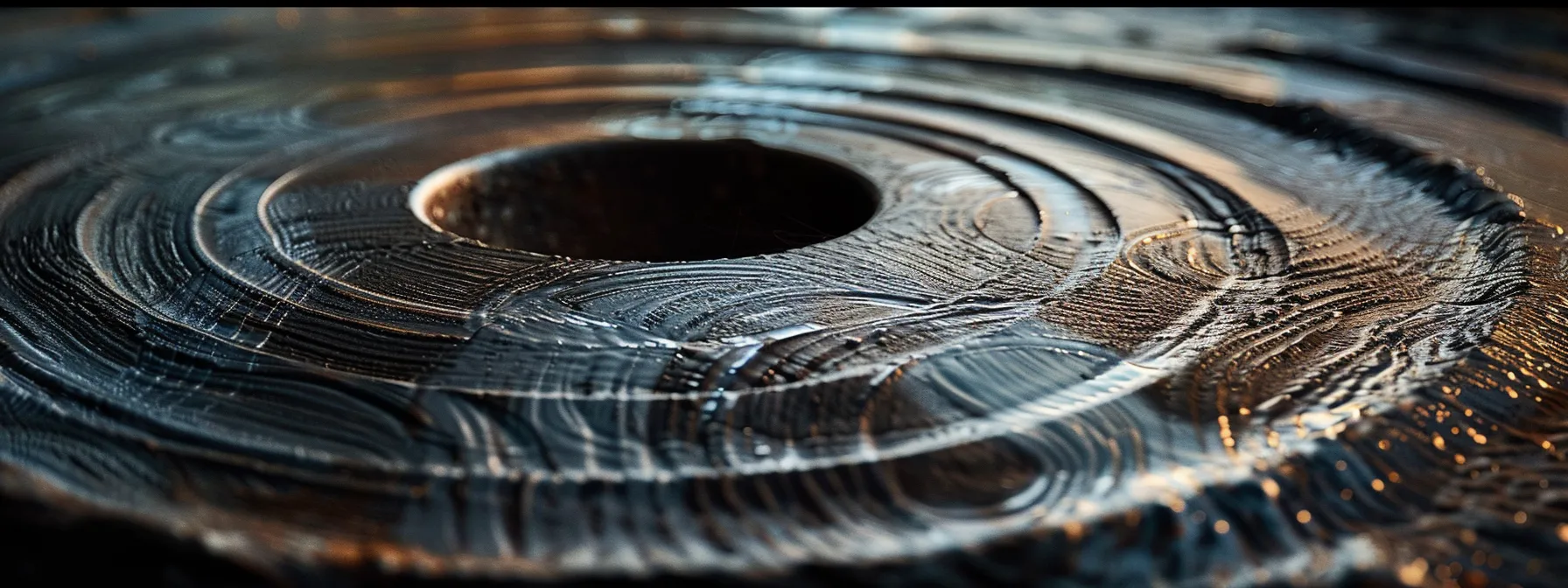
To maintain the performance of my wet stone grinder, I always prioritize consistent flattening. Regularly checking for flatness allows me to ensure that I achieve the correct bevel when sharpening my tools. I've found that using a flattening stone or plate works best for this purpose; it prevents any unwanted grooves that could disrupt my sharpening process. When I flatten the stone, I make sure to perform the motion in a circular pattern, which helps create an even surface every time. Occasionally, I’ll use sandpaper as a quick fix for minor imperfections. I keep it simple – just like running a dishwasher for ease of cleaning, maintaining my grinder’s surface can significantly enhance my overall knife-making experience.
Check for Flatness Regularly
I check the flatness of my wet stone grinder regularly to ensure it remains optimal for honing my tools. Whether I'm working on woodworking projects or fine-tuning a pair of scissors, I’ve learned that an uneven surface can result in poor sharpening outcomes. By using a circular motion during the flattening process, I create a consistently smooth surface that enhances the efficiency of my sharpening tasks, much like ensuring quality control in a factory setting.
Use a Flattening Stone or Plate
I find that using a flattening stone or plate made specifically for mineral abrasives, like those containing oxide compounds, truly makes a difference in my sharpening tasks. This tool helps me maintain an even surface on my wet stone grinder, which is crucial for achieving sharp and precise edges. Occasionally, I’ll pair it with some steel wool to remove any lingering grit, so I can also apply a touch of cocoa butter afterward to keep everything in optimal condition. If ever I have lingering questions about maintenance, I refer to a simple FAQ for guidance to stay on track with my routine.
Perform Flattening in a Circular Motion
When I perform flattening on my wet stone grinder, I always use a circular motion to ensure evenness of the surface. This technique helps me avoid any uneven spots that could impact the sharpening of my tools, such as my fillet knife, which I rely on for precise cuts. I often keep a bit of soap handy, as it can aid in reducing friction and ensuring a smooth glide during the flattening process, especially when working with metal surfaces that may accumulate iron particles over time.
Consistent flattening plays a crucial role in maintaining your grind quality. Now, let’s explore how proper storage solutions can further extend the life of your grinder, keeping it in top shape for all your outdoor tasks.
Proper Storage Solutions to Extend Grinder Life
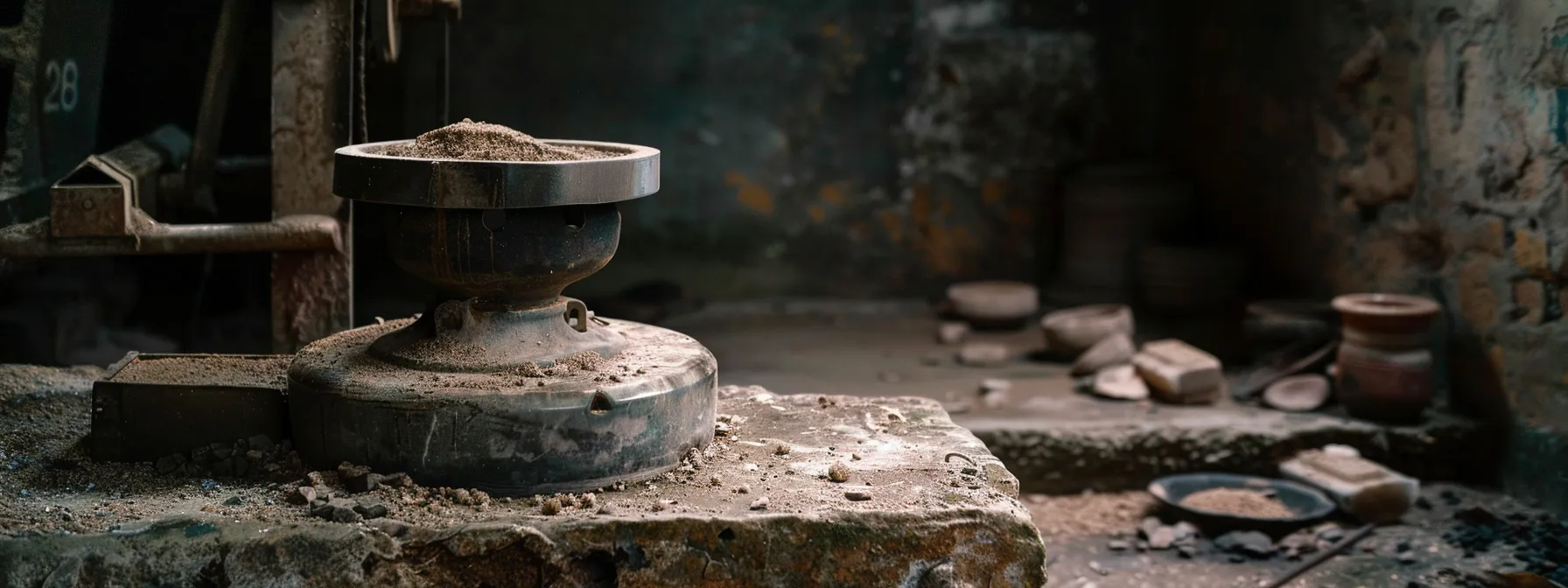
To ensure that my wet stone grinder remains in top condition, I focus on proper storage solutions. I always store the machine in a cool, dry place, away from moisture that could affect its performance. Direct sunlight or extreme temperatures can damage both the granite surface and the tungsten carbide components, so I make it a point to avoid those conditions. I also cover the grinder to shield it from dust, which can accumulate and impact the quality of my sharpening. Maintaining these simple practices not only protects the grinder but also prolongs its lifespan, helping me achieve the precision I need for sharpening tools like my axe or ceramic blades without applying unnecessary pressure.
Store in a Cool, Dry Place
I always ensure my wet stone grinder is stored in a cool, dry place to maintain its longevity and performance. Exposure to humidity can quickly affect the granite's integrity, potentially altering its grinding ability on the Rockwell scale. To protect it from moisture, I use a plastic cover or place it on a stable wooden shelf, keeping it away from areas like cutting boards or drying racks where water can accumulate.
Avoid Direct Sunlight or Extreme Temperatures
I avoid storing my wet stone grinder in direct sunlight or extreme temperatures to protect its components, including the tungsten head and granite surface. Exposure to harsh conditions can compromise the performance of my sharpening jig, affecting its precision during crucial moments, like when I'm sharpening my favorite cleaver or tackling a stump grinder. I always make sure to find a stable location where my equipment can maintain its integrity, ensuring every stroke of the blade is as effective as possible.
Cover to Protect From Dust
I always make sure to cover my wet grinder after use to protect it from dust accumulation. Even a thin layer of dust can hinder the efficiency of my sharpening stone, especially when sharpening tools like my trusted chainsaw. By covering the grinder, I ensure that the carbide components remain clean, allowing me to maintain precision with every cut, and keeping my thumb safe from unwanted nicks while I work.
Proper storage keeps your grinder in top shape, but that's just the beginning. To truly maintain its performance, don’t overlook the importance of regular lubrication.
Regular Lubrication Keeps the Grinder Running Smoothly
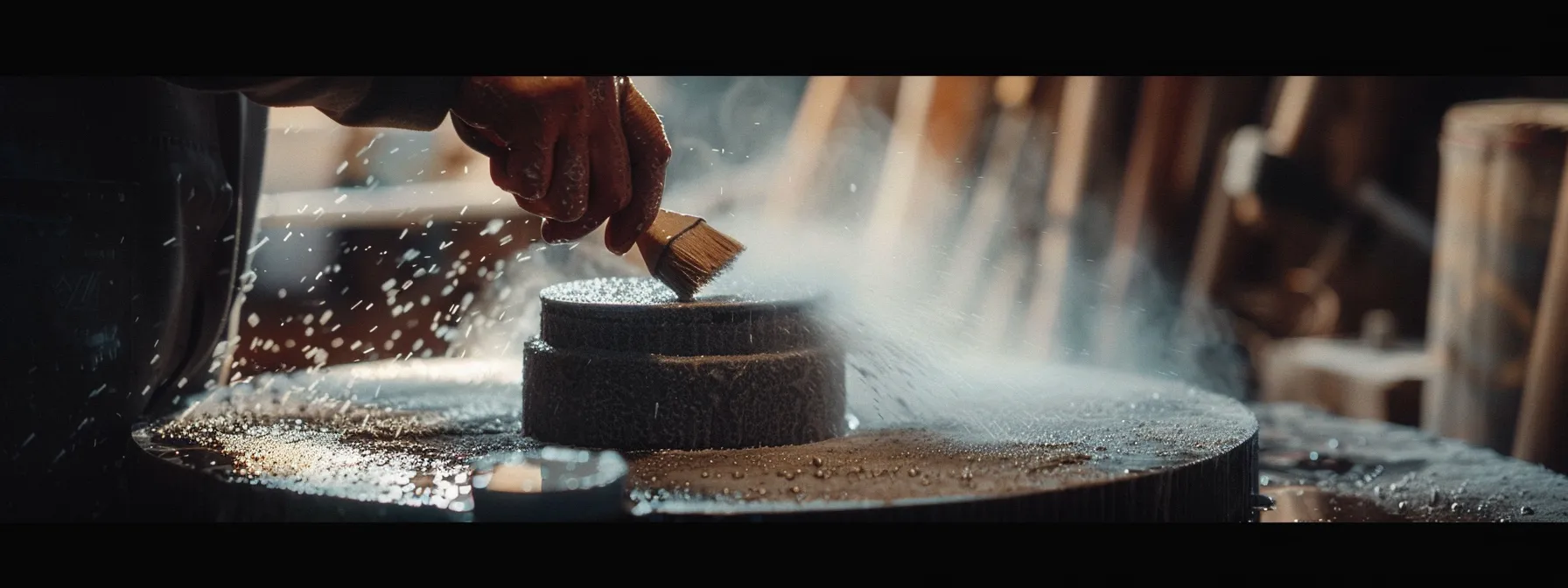
To ensure my wet stone grinder operates at peak performance, I prioritize regular lubrication as a key part of maintenance. I only use recommended lubricants designed for the specific hardness of the equipment, as they effectively reduce friction on moving parts. With a finger, I apply lubricant periodically to keep everything running smoothly. During my inspections, I watch for signs of over or under-lubrication, which can impact efficiency. By staying attentive to these details—grabbing a brush when necessary for cleanup—I maintain a well-functioning machine that consistently delivers sharp results, whether I'm working on knives or honing steel.
Use Recommended Lubricants Only
I always emphasize the importance of using recommended lubricants when maintaining my wet stone grinder. For knife sharpening, I specifically choose honing oil that is designed to reduce burr formation, ensuring a smoother finish on my edges. While working near my sawmill, I make it a point to keep a bowl of this lubricant handy to easily apply it whenever needed, maintaining the efficiency of my equipment.
Lubricate Moving Parts Periodically
In my routine maintenance of the wet stone grinder, I make sure to lubricate the moving parts periodically. Applying the right lubricant, especially when sharpening, keeps the steel components from developing excess friction, which can lead to unwanted heat treating. I always keep a clean towel nearby to wipe away any excess lubricant and reduce the risk of buildup, ensuring that my grinder stays efficient and sharpens tools effectively.
- Lubricate moving parts regularly.
- Use the appropriate lubricant for sharpening tasks.
- Keep a towel handy for cleanup.
- Avoid heat treating from excessive friction.
- Minimize the risk of buildup on components.
Inspect for Over or Under-Lubrication Signs
I always keep a close eye on the lubrication of my wet stone grinder to ensure it’s just right. If the lubricant resembles a thick layer of nut butter, it often indicates over-lubrication, which can hinder my grinding wheel’s performance. Conversely, if I notice the lubricant is more scarce than the oil I drizzle on my cooking pans, it's a sign I need to apply more to maintain the smooth operation of my Arkansas sharpening tasks.
Regular lubrication is just the beginning of maintenance. Next, let’s turn our attention to the wheel grit, a crucial factor in achieving optimal sharpening results.
Monitor and Adjust Wheel Grit for Best Results

Finding the right wheel grit for my wet stone grinder is critical for achieving the desired edge on my tools. I assess the appropriate grit based on the materials I'm working with, especially when sharpening stainless steel for my woodcutting projects. As I continue to use the wheels, I keep an eye on wear; sometimes, a bit of subtle degradation can affect performance. When I notice that the grit has worn down, I go ahead and replace the wheels to maintain efficiency. Striking a balance between coarse and fine grits gives me the versatility I need, allowing me to tackle everything from heavy-duty sharpening to fine honing with just a drop of oil and some quick strokes on leather strops afterward.
Identify the Appropriate Grit for Your Needs
Understanding which grits I should use on my bench grinder significantly influences my sharpening outcomes. For tougher materials, I often start with a coarse grit to remove more carbon quickly, followed by finer grits to achieve that razor-sharp edge. I also keep a close watch on the generated dust during the sharpening motion, ensuring that I clean it regularly to prevent any buildup that could hinder performance.
Replace Wheels When Grit Wears Down
When I notice the grit on my wet stone grinder has visibly worn down, it’s time to replace the wheels. Using quality wheels made for carbon steel and vanadium ensures that I maintain sharpness efficiency, especially when working on various tools in my mill. I always keep an eye on how the abrasive surface is holding up, as this adjustment directly impacts the effectiveness of my sharpening tasks.
Balance Between Coarse and Fine Grits for Versatility
Finding the right balance between coarse and fine grits has been a game changer for my sharpening tasks. Coarse grits tackle tough materials efficiently, making initial sharpening a breeze, while finer grits refine the edge to a remarkable sharpness. This combination allows me to handle a wide range of tools with ease, maintaining versatility in every project.
- Start with coarse grits for effective initial sharpening.
- Use fine grits to achieve the desired sharpness.
- Adjust grit types based on the tools I’m working on.
Fine-tuning your wheel grit gets you excellent results, but maintaining that quality over time is equally important. Get ready to take your sharpening game to the next level by implementing a proactive maintenance schedule!
Implement a Routine Maintenance Schedule
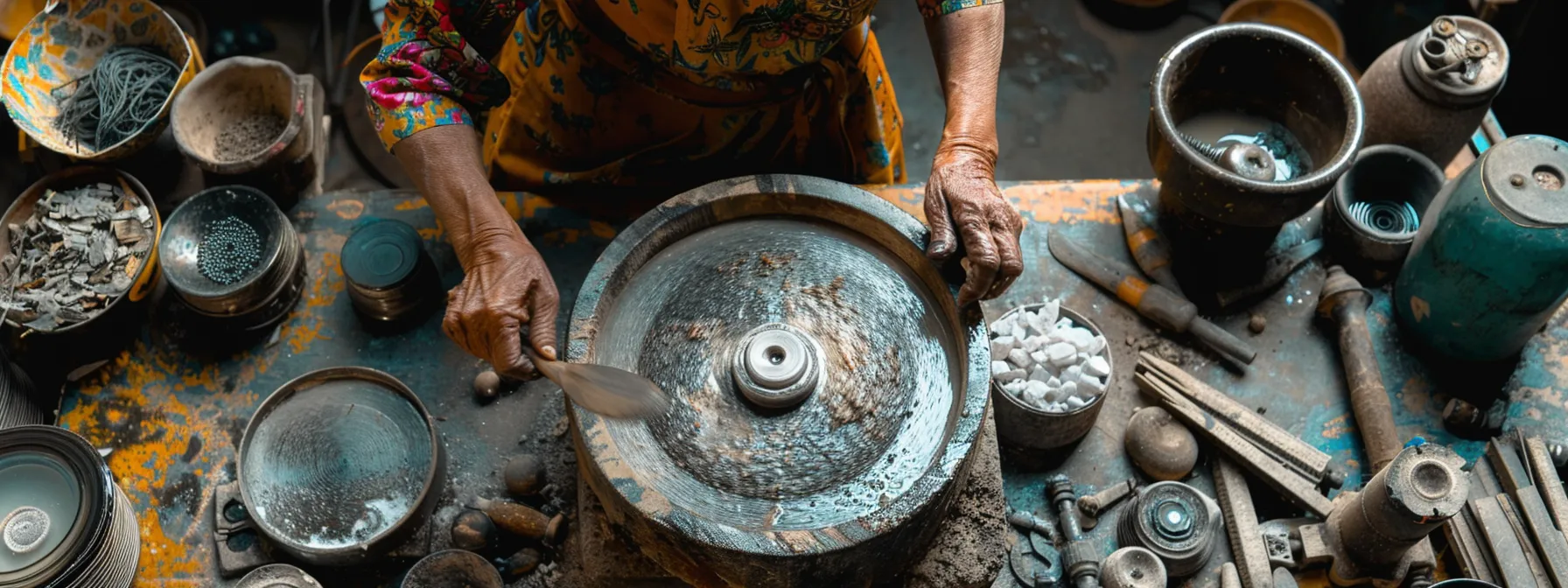
Maintaining my wet stone grinder goes beyond just occasional cleanings; I find that establishing a routine maintenance schedule significantly enhances its performance. I categorize tasks into daily, weekly, and monthly intervals, which keeps everything in top shape. Daily checks involve simple cleaning after use, while weekly tasks might include inspecting for wear and tear on components. Monthly, I take a deeper look at grit levels and potential wheel replacements. I also keep a maintenance log to track these activities, making it easier to identify trends and anticipate future needs. An annual professional servicing is crucial for addressing any underlying issues I might overlook, ensuring my grinder operates flawlessly for years to come.
Daily, Weekly, and Monthly Maintenance Tasks
I prioritize maintaining my wet stone grinder by implementing a structured routine that encompasses daily, weekly, and monthly tasks. Each day, I make sure to wipe down surfaces and clear away any sharpening debris to keep it clean and ready for the next project. Weekly, I inspect the components for any signs of wear, ensuring everything is functioning as intended.
On a monthly basis, I assess the grit levels of the wheels, replacing them if necessary to maintain optimal performance during sharpening. This regular attention not only ensures efficiency but also helps avoid potential issues down the line. Here’s how I break down my maintenance schedule:
- Daily: Clean surfaces and remove debris.
- Weekly: Inspect components for wear.
- Monthly: Check grit levels and replace wheels as needed.
Keep a Maintenance Log for Tracking
I find that keeping a maintenance log for my wet stone grinder is invaluable for tracking all of my maintenance activities. This log allows me to record dates for cleaning, inspections, and replacements, making it easier to notice any patterns in wear and tear. Regularly updating this log ensures I stay organized and proactive, preventing any surprises down the line.
- Document each cleaning after use.
- Record weekly inspections and any findings.
- Note monthly assessments, including grit levels and wheel replacements.
Schedule Professional Servicing Annually
Every year, I make it a priority to schedule professional servicing for my wet stone grinder. This step ensures that any underlying issues are addressed by an expert, extending the life of my equipment and maintaining its performance. A trained technician can catch problems I might overlook, giving me peace of mind that my grinder is always ready for heavy-duty sharpening tasks.
- Annual professional servicing enhances performance.
- Technicians address overlooked issues.
- Regular servicing extends the grinder's lifespan.
Conclusion
Maintaining a wet stone grinder is vital for ensuring optimal performance and longevity. Regular cleaning, consistent flattening, and proper lubrication directly impact the sharpening efficiency of tools. Implementing a structured maintenance schedule helps identify wear and potential issues early on. By following these proven maintenance tips, I can achieve precise edges on my blades while extending the life of my grinder.









































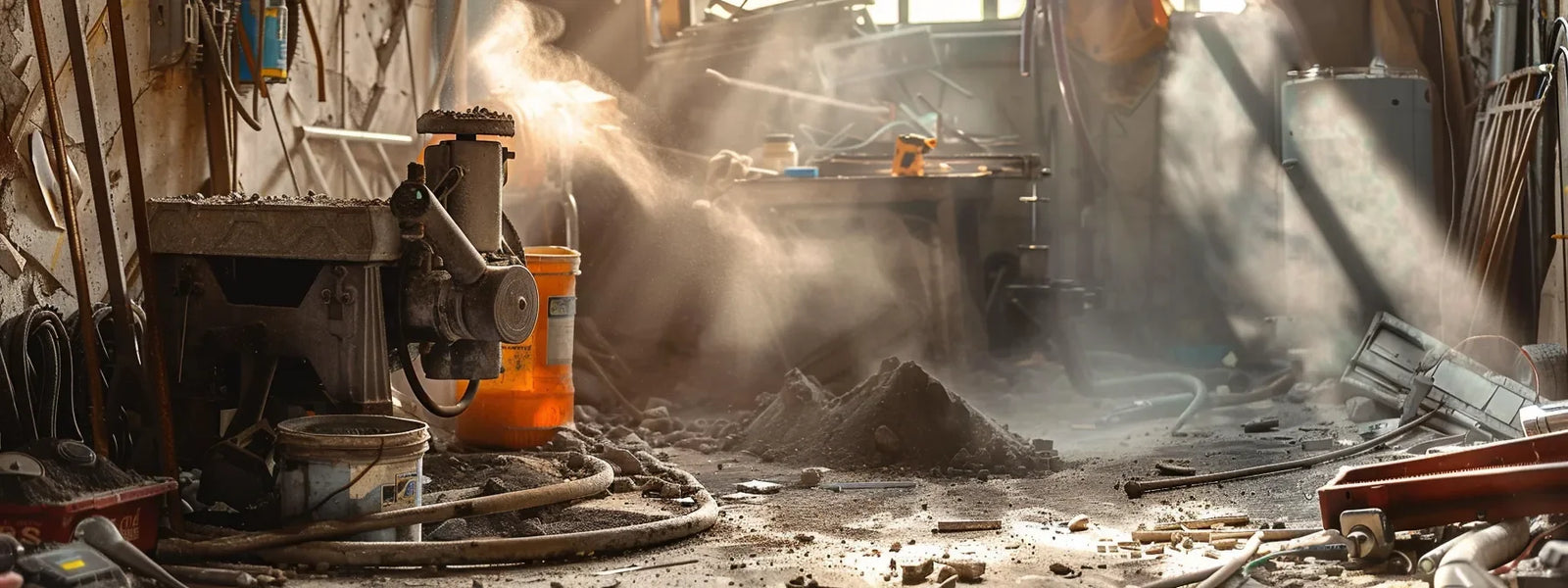



Leave a comment (all fields required)